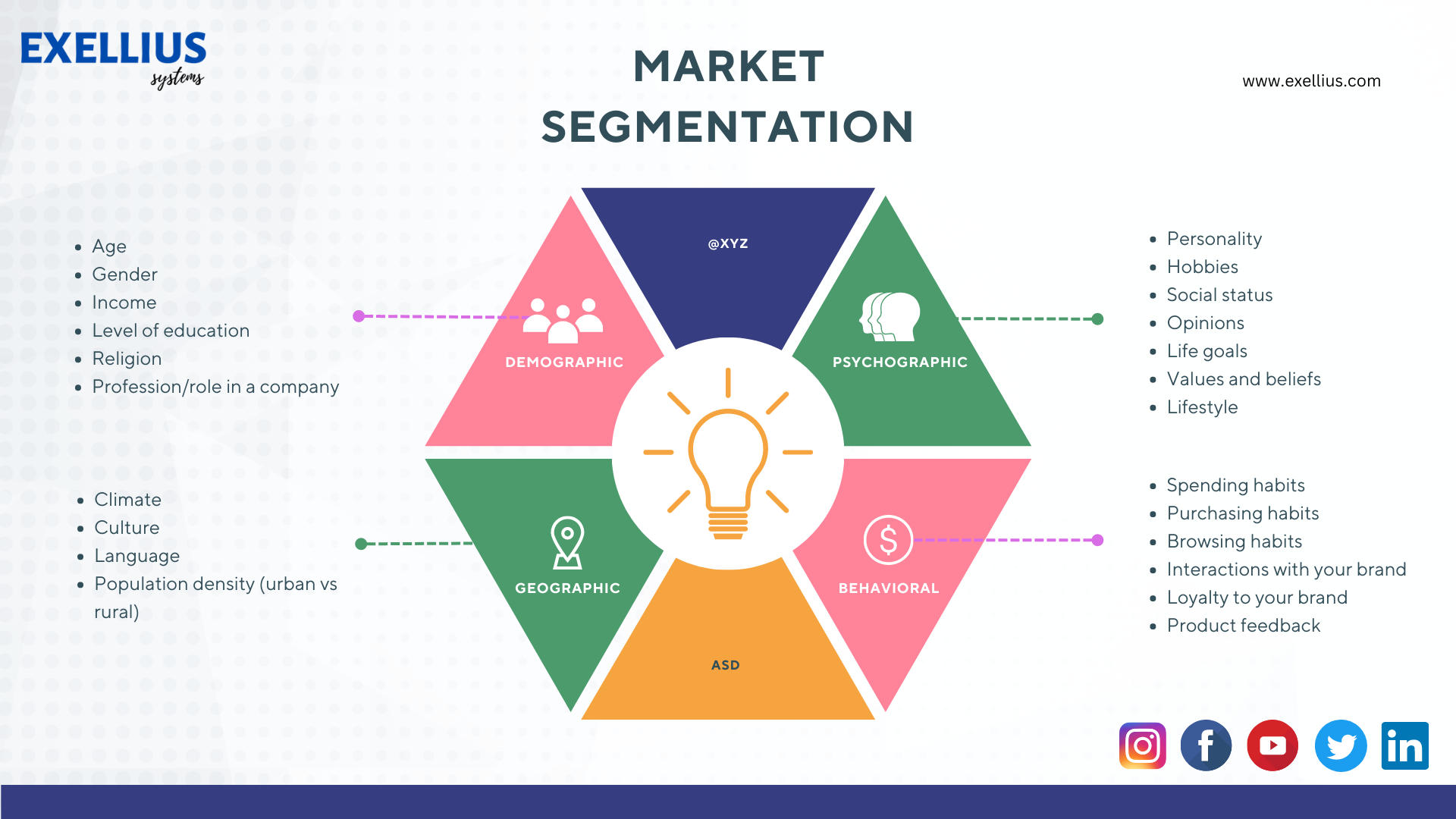
Get to the root of your clients’ purchasing motivations by segmenting your market to better satisfy their individual demands of market segmentation. This will help you get the most out of your marketing budget.
77% of marketing ROI, according to research, comes from segmented, targeted, and triggered initiatives. Therefore, if your marketing initiatives aren’t working, conduct extra market research to learn more about each segment’s unique characteristics.
The ability to provide individualized customer experiences is one of the ways market segmentation tactics assist your firm generate more cash. Since you can segment your audience using the best personalization tools, you may:
In this blog, I’ll walk you through the four main types of market segmentation:
You can use the market segmentation strategy to break down your consumer base into smaller groups based on traits they have in common, such as age, income, interests, and location. Segmentation is used to focus marketing efforts on the customers that fit your ideal customer profile (ICP), or those who are most likely to purchase your good or service.
For instance, a consumer at an organic food store is probably going to have some, if not all, of the following traits:
Use message that resonates with a market segment made up of clients who have those characteristics rather than squandering money on campaigns that target a wide slice of the market. Additionally, think about which channels are most likely to lead to high interaction.
A Pinterest campaign promoting goods with sustainable components would be a smart move for this made-up organic food store to attract potential customers. Why Pinterest instead of another social media platform? In fact, up to 80% of Millennial women and 40% of Millennial men use Pinterest, and 9 out of 10 Pinners use it to browse for shopping ideas.
Demographic segmentation, one of the most basic yet successful types of segmentation, is widely employed by D2C ecommerce firms. Using demographic segmentation, you may divide your audience and develop consumer personas based on factual data like:
You can target your audience with goods that fit within their spending limits, for instance, if you segment your audience depending on the income of your clients. This simple segmentation method comes with three major benefits if you own a small business or are new to online shopping:
A manufacturer of luxury products, collaborated with Exellius to display a variety of offers on their website. With a Father’s Day promotion providing a free gift to consumers purchasing above £200—a threshold that took into account the spending preferences of Montblanc’s target audience—they increased conversions by 118%.
Psychographic segmentation is the practice of putting people in groups based on shared psychological traits, political beliefs, and objectives.
For instance, you may categories clients based on:
Psychographics is a harder sector to identify because these traits are arbitrary, but it’s also the most valuable one. The finest sources of information for psychographic segmentation are your audience analytic tools and social media, but you should also employ surveys, interviews, and focus groups to further your understanding of your target audience in this group.
You can gain a thorough understanding of the preferences, requirements, wants, and loves of your customers through psychographic segmentation. Then you can develop marketing initiatives that speak to their psychographic profile.
Customers are categorised according to their residences and shopping locations through the process of geographic segmentation. Generally speaking, residents of the same city, state, or zip code have comparable demands, perspectives, and cultural preferences.
The main benefit of geographic segmentation is that it offers perception into what the location of your consumers indicates about a number of geographically specific factors, such as their:
As with any market segmentation techniques, you’ll need to do a data analysis to determine how each variable affects your clients’ purchasing decisions. People who live in colder climates, for instance, are probably interested in purchasing winter apparel and home heating equipment.
The technique of categorizing clients based on typical behavior’s they display when interacting with your business is known as behavioral segmentation.
You can divide your audience into groups for this form of segmentation based on:
By gathering this factual information from your website analytics, you may spot trends in your consumers’ behaviour that can be used to anticipate how they will interact with your business going forward.
After that, you can use this theory to offer tailored recommendations that take your consumers’ wants into account. For instance, Spotify offers daily mixes to its customers depending on the genres and artists they’ve previously listened to.
At Exellius, we deliver extremely relevant and targeted campaigns based on a variety of activities, such as:
For More contact us now
Follow us on LinkedIn


